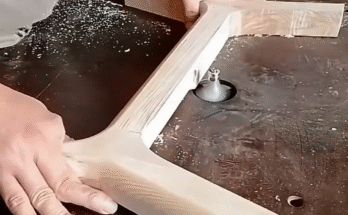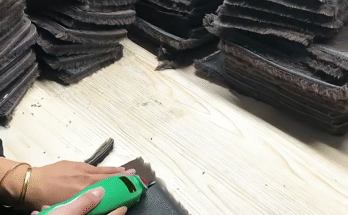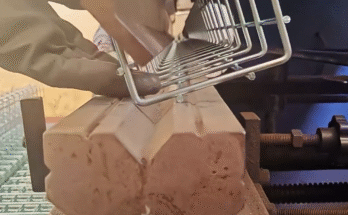Invisible protective nets are an increasingly popular solution for ensuring safety in balconies, windows, staircases, and other open areas without obstructing views. They offer a discreet yet robust barrier against falls, especially for children and pets, and can also deter birds. The installation process requires precision and adherence to safety standards to ensure the net’s effectiveness and durability.
Here’s a step-by-step guide to the installation of invisible protective nets:
Step 1: Site Assessment and Measurement – The Foundation of a Perfect Fit
Accurate planning is crucial for a secure and aesthetically pleasing installation.
- Identify the Area: Determine the specific area where the net will be installed (e.g., balcony, window, staircase opening).
- Measure Dimensions: Precisely measure the height and width of the opening. Take multiple measurements at different points to account for any irregularities.
- Assess Anchor Points: Identify suitable structural elements (concrete, brick, strong wood) where mounting hooks or anchors can be securely fastened. Ensure these points are strong enough to withstand tension.
- Consider Obstructions: Note any pipes, railings, or other obstructions that might affect the net’s placement or require special consideration during installation.
Step 2: Gathering Materials and Tools – Your Installation Kit
Having the right equipment ensures a smooth and safe installation.
- Invisible Net: Select a high-quality net made of durable, UV-stabilized material (e.g., high-density polyethylene or nylon), with an appropriate mesh size for the intended purpose (e.g., smaller mesh for pet protection, larger for general safety).
- Mounting Hardware:
- Hooks/Eye Bolts: Stainless steel or galvanized hooks/eye bolts suitable for outdoor use.
- Wall Plugs/Anchors: Appropriate for the wall material (e.g., concrete anchors, expansion bolts, toggle bolts).
- Steel Wire Rope (Optional): Thin, strong steel wire for perimeter support, if required.
- Crimping Sleeves/Ferrules (Optional): For securing steel wire rope loops.
- Tools:
- Measuring tape, pencil, marker.
- Drill and appropriate drill bits for the wall material.
- Screwdriver or wrench for tightening hooks.
- Pliers, wire cutters (if using steel wire rope).
- Hammer (for wall plugs).
- Ladder or scaffolding (for high areas).
- Safety glasses and gloves.
Step 3: Preparing the Installation Area – A Clean Start
Proper preparation ensures a strong and lasting attachment.
- Clean the Surface: Ensure the mounting surfaces are clean, dry, and free of dust, loose paint, or debris.
- Mark Drill Points: Using your measurements, carefully mark the precise locations for drilling holes for the hooks or anchors. Ensure even spacing for uniform tension. Typically, hooks are spaced every 6-12 inches (15-30 cm) around the perimeter.
- Pre-Drill Holes: Drill holes at the marked points to the correct depth and diameter for your chosen wall plugs or anchors.
Step 4: Installing Mounting Hardware – Securing the Perimeter
This step creates the framework for the net.
- Insert Wall Plugs/Anchors: Insert the appropriate wall plugs or anchors into the drilled holes. Tap them gently with a hammer until flush with the surface.
- Screw in Hooks/Eye Bolts: Screw the hooks or eye bolts into the installed wall plugs/anchors. Ensure they are tightened securely and oriented correctly to receive the net or perimeter wire.
- Install Perimeter Steel Wire Rope (If Used): If your system uses a perimeter steel wire rope for added strength or a cleaner look, thread it through the eye bolts, pulling it taut and securing the ends with crimping sleeves or appropriate clamps. This creates a strong frame for attaching the net.
Step 5: Attaching the Invisible Net – The Heart of the Barrier
This is where the net is carefully stretched and secured.
- Unroll and Orient the Net: Carefully unroll the net and orient it to match the dimensions of the opening. Avoid tangling.
- Initial Attachment: Begin by attaching one corner of the net to a hook.
- Sequential Attachment: Working systematically around the perimeter, attach the net to each hook. There are several methods:
- Direct Lacing: Thread a strong nylon cord (often provided with the net) through the net’s border and around each hook, lacing it tightly.
- Clip/Tie Attachments: Some nets come with pre-attached clips or ties that can be directly fastened to the hooks or perimeter wire.
- Integrated Loops: Nets with integrated loops can be directly hooked onto the mounting hardware.
- Maintain Tension: As you attach the net, pull it taut to ensure it is stretched evenly and firmly. This is crucial for its protective function and to prevent sagging. Ensure there are no large gaps between the net and the mounting surface.
Step 6: Tensioning and Trimming – Achieving a Seamless Look
Fine-tuning the net’s fit.
- Adjust Tension: Once the entire net is attached, go back and adjust the tension if necessary. The net should be taut but not overstretched to avoid damaging the material or anchor points. It should feel firm to the touch.
- Trim Excess Net (If Necessary): Carefully trim any excess netting material that extends beyond the attachment points, using sharp scissors or a utility knife. Leave a small margin for a neat finish.
- Secure Loose Ends: Ensure all lacing cords or ties are securely knotted and trimmed to prevent unraveling.
Step 7: Final Inspection and Maintenance – Ensuring Long-Term Safety
A thorough check confirms the installation’s integrity.
- Visual Inspection: Conduct a thorough visual inspection of the entire installed net. Check for any loose attachments, gaps, tears, or areas of insufficient tension.
- Tug Test: Gently tug on various sections of the net to confirm it is securely fastened and does not give way easily.
- Functionality Check: If installed on a balcony or window, ensure it does not impede emergency exits or necessary access (e.g., for cleaning, if designed to allow it).
- Regular Maintenance: Advise on periodic checks for wear and tear, especially due to weather exposure. Re-tensioning or minor repairs might be needed over time.
Installing invisible protective nets is a detailed process that prioritizes safety and aesthetics. By following these steps carefully, you can create a secure and unobtrusive barrier that provides peace of mind without compromising your view. Always prioritize safety and consider consulting with professionals for complex installations or if you are unsure about any step.



